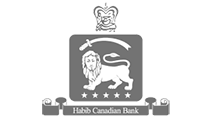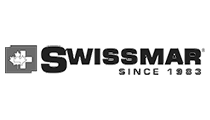SUISSE news Fall 2017
Environment / Green Tech | Switzerland-Canada Comparisons
Environment / Green Tech | Switzerland-Canada Comparisons
October 2017
Which City is greener: Toronto or Zurich?
(Kurt Schläpfer)
The term “green city” has a multidimensional meaning. A “green city” is a city that undertakes efforts to achieve high environmental quality which, in the end, contribute to a better quality of life for their residents. In this short comparison six indicators characterizing a green city are compared:


Green city indicators for Toronto and Zurich
* Primary source: World Council on City Data 2015 (and newer data where available)
- Greenhouse gas emissions
- Energy consumption
- Traffic
- Water consumption
- Waste management
- Green space
More extended comparisons may additionally include assessments of the city’s environmental policies, for instance, to reduce traffic congestions, promote renewable energy, improve the air quality and support green building standards.

Zurich, Switzerland
Greenhouse Gas Emission
Greenhouse gases are able to trap heat in the atmosphere. In that capacity they are responsible for the greenhouse effect. In urban areas greenhouse gases are mainly generated by burning fossil fuels used for electricity production, heating and transportation.
In Toronto, there are two dominant sources of emissions: natural gas burning (mostly in buildings for heating) and burning of gasoline and diesel fuel in cars and trucks. The natural gas burning contributes to a relatively high greenhouse gas emission. In contrast to this, Zurich boasts of having a good performance on greenhouse gas emissions. This is primarily attributable to the low incidence of heavy industry and the limited use of fossil fuels for heating. The greenhouse gas emission per inhabitant is 35% lower in Zurich than in Toronto (see table below).
Energy Consumption
Unlike Zurich, Toronto has hot summers and cold winters requiring more heating and cooling. Therefore it is not surprising that Toronto has a higher electricity consumption per capita than Zurich. Especially space cooling, which is not common in Switzerland, requires a high power consumption. However, Toronto is using an electricity mix consisting of 31% renewable energy, compared to Zurich with only 19% renewable energy.
In November 2008, Zurich voted to adopt a legislation with the goal of reducing the energy consumption from 5,000 watt to 2,000 watt per person – a very ambitious long-term project under the name 2,000-Watt-Society. The project includes all forms of individually consumed energy, not only electricity. In 2016, Zurich arrived at a value of 4200 watt and expects to attain 2500 watt by 2050.
Traffic
In a "green city", traffic flows smoothly and the residents use environment-friendly means of transportation, such as walking, cycling, and public transport. Whether this is a reality depends on the number of cars circulating in the city, the population density and the existing road network. In the traffic category, Toronto fails to receive top scores. A main problem are the traffic congestions occurring in the morning and in the evening. According to the TomTom Traffic Index the average daily travel time by car is 31% longer compared to regular traffic. Surprisingly, Zurich does not have a better score, although the city is seven times smaller than Toronto. But Zurich has a comparable population density and no highways near the downtown area. Therefore, the congestion level in Zurich is almost equal to that in Toronto. However, Zurich has a significantly higher number of non-automobile commuters than Toronto.
Water Consumption
Water is a renewable but finite resource. Therefore, cities should make every effort towards a sustainable management of their water resources. One indicator for this is the daily domestic water consumption per person. With 202 liter per day the water consumption in Toronto is 25% higher than in Zurich. A reason for this might be a more extensive use of outdoor water due to the much hotter summers in Toronto.

Toronto, Canada
Waste Management
Toronto and Zurich have different approaches for their waste management. In Zurich, the separation of recyclable material (paper, cardboard, metal, glass, plastics, textiles) is left to the households, and only the non-recyclable garbage is collected by the city. Households have to use a prepaid garbage bag called Züri-Sack. The recyclable material is collected separately or can be dropped off at one of the many collection points across the city. In Toronto, all ingredients of the household waste are collected by the city and then sorted by the type of material. For that purpose, the household waste is collected in different bins (blue, grey and green). As a result of this different waste treatment, Zurich has a lower amount of waste per person collected by the city, but Toronto has a higher percentage of recycled waste. In 2007 Toronto set a target of diverting 70% of the collected waste. By 2016, the diversion rate has reached a value of 53%.
Green Space
Green space is more than just a luxury. Different studies have shown that the presence of green space in a living environment has a significant effect on health. In Toronto, the proportion of public green areas is 50% higher than in Zurich.
Which City is Greener?
Toronto is greener in the use of renewable energy, the proportion of public green areas and the percentage of recycled municipal waste. On the other hand, Zurich has a better performance with respect to the greenhouse gas emissions, electricity consumption, domestic water consumption and the percentage of non-automobile commuters.
|
Indicator |
Toronto* |
Zurich** |
|
Population |
2.81 million |
410,400 |
|
Population density |
4,430 |
4,670 |
|
Electricity consumption |
9,030 |
6,805 |
|
Renewable energy |
31% |
19% |
|
Greenhouse gas emission |
7.33 |
4.7 |
|
Public green areas |
13.7% |
9.0% |
|
Domestic water consumption |
202 |
160 |
|
Household waste |
355 |
175 |
|
Recycled municipal waste |
53% |
43% |
|
Personal automobiles |
0.4 |
0.26 |
|
Driving time spent in traffic congestion (additional travel time in % compared to normal traffic) |
30% |
31% |
|
Percentage of persons going to work other than with a personal vehicle |
54% |
74% |
** Primary source: Statistisches Jahrbuch der Stadt Zurich 2016
















